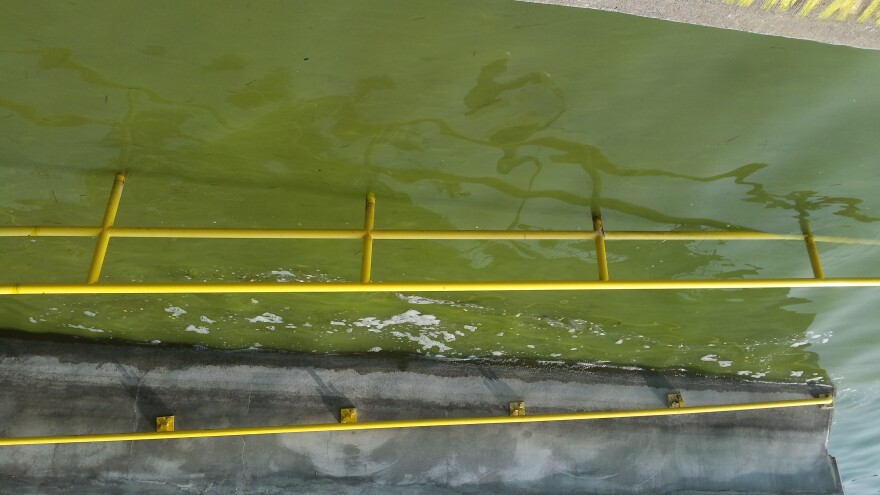Updated at 8:00 p.m. Thursday
Onondaga County health officials continue to say that the city of Syracuse's drinking water, along with the drinking water of other municipalities that draw water from Skaneateles Lake, is safe to drink.
Samples tested Thursday at the state’s Wadsworth Lab in Albany found 0.25 parts per billion inside the City of Syracuse Gatehouse located in the Village of Skaneateles, but prior to the completion of the chlorination.
This level is consistent with prior reported sampling at the Gatehouse and below the health advisory levels for both adults and sensitive populations. All other locations in the water system – including the City of Syracuse, the Town of DeWitt, the Town of Skaneateles, the Village of Elbridge, and the Village of Jordan – showed non-detectable levels of algal toxins in finished water. These levels remain below the EPA’s 10-day health advisory level of 0.3 parts per billion for sensitive populations and well below the EPA advisory level for adults of 1.6 parts per billion.
Residents in the Village of Skaneateles and the other municipalities which use this drinking water source can continue to drink the water.
Original Post
Elevated levels of toxic blue-green algae have been discovered in the water of Skaneateles Lake. The lake is the primary water supply of the city of Syracuse’s water system. While tests show the public water is still safe to drink, residents who live along the lake’s shoreline and drink water directly from the lake could be at risk.
Blue-green algae is a natural plant-like bacteria, according to SUNY College of Environmental Science and Forestry professor Greg Boyer. While most do not produce toxins, the species found in Skaneateles Lake does. So far, testing of Syracuse’s water system shows toxin levels below Environmental Protection Agency guidelines. But Boyer said it is a different story for shoreline residents that use private water intakes from the lake.
“Many of their water intakes only go out ten feet and they’re relatively close to the shore," Boyer said. "The wind blows these blooms and concentrates them against the shoreline. It may be concentrating them right over the top of their intake and it’s very easy for the bloom to mix down ten feet of water.”
The Onondaga County Health Department is warning residents who draw directly from the lake to not drink the water. In contrast, Syracuse’s water system has intakes 30 feet below the surface and is treating the water with chlorine to reduce toxin levels further.
"We are not going to risk public health to save money but we're not going to spend money for a problem that does not exist yet."
Syracuse Mayor Stephanie Miner said she is a huge fan of the city’s water system. But it does not have a filtration plant. Miner said if the water becomes unsafe something will need to change.
“We are not going to risk public health to save money but we’re not going to spend money for a problem that does not exist yet," Miner said. "We’re watching it.”
Current weather conditions have been favorable to the algae blooms. They need sunlight, warm weather and calm winds. Heavy rains from earlier this year may have washed nutrients into the lake. But the algae will be gone once it gets colder.
Pets, especially dogs, are at risk if they swim in the green water and should be washed off.
Onondaga County officials, along with the state health department released a statement Wednesday evening on toxin levels found in the water:
Last [Tuesday] night, the New York State Department of Health, Onondaga County Health Department and the City of Syracuse Department of Water conducted expanded, confirmatory sampling throughout the water system served by Skaneateles Lake, after initial testing revealed .26 parts per billion of algal toxin in the finished water sample from the Village of Skaneateles.
Although that level was below the EPAs 10-day health advisory level of .3 parts per billion for sensitive populations and well below the EPA advisory level for adults of 1.6 parts per billion, the expanded testing was necessary to monitor the situation and confirm the levels present in the systems served by this public drinking water supply.
Samples tested today [Wednesday] at the state’s Wadsworth Lab in Albany found .25 parts per billion in the finished water sample from the Village of Skaneateles, a level consistent with prior sampling and below the health advisory levels for both adults and sensitive populations. All other locations in the water system -- including the City of Syracuse, the Town of Dewitt, the Town of Skaneateles, the Village of Elbridge, and the Village of Jordan -- showed non-detectable levels of algal toxins in finished water. Residents in the Village of Skaneateles and the other municipalities which use this drinking water source can continue to drink the water.
The New York State Department of Health, Onondaga County Health Department and the City of Syracuse Department of Water will continue enhanced monitoring through daily testing across the system until all samples consistently return non-detect results.
State and local officials will remain vigilant on this issue and continue our efforts to update and inform communities in Onondaga County.






